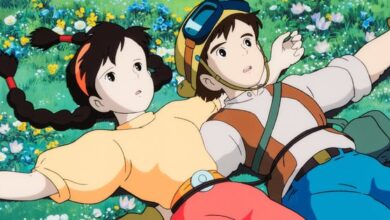The Most Anticipated Anime of Fall 2025
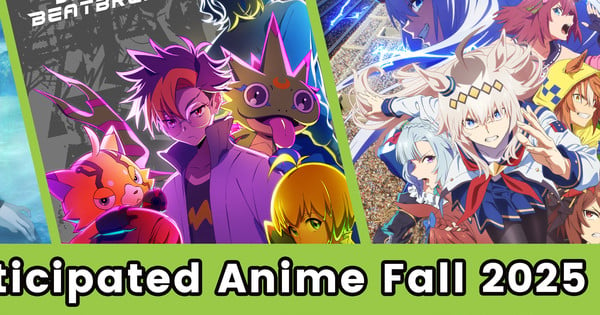
As some of the biggest anime of the year wind to a close, our team looked to October and beyond for their next must-watch anime series. Fan-favorites like Spy×Family and Ranma ½ are set to return, but it was those little digital pals and a monstrous new series that really grabbed our critics’ attention.
Below are the editorial team’s picks for some of the best upcoming anime.

©柴田ヨクサル/ヒーローズ・Tojima Rider Project ©石森プロ・東映
We all had dreams as kids. Some of us wanted to be astronauts or train engineers. Others wanted to be superheroes. Tojima Tanzaburo has spent his whole life working towards his childhood dream: to become Kamen Rider.
Yet, no matter how much he trained and visited places from the show, Shocker never kidnapped him, experimented on him, and turned him into Kamen Rider. At 40 years old, he gave up and sold all his Kamen Rider merch. But when a group of men in shocker masks decides to rob a convenience store, Tojima finally has a chance to make his dream a reality.
That is the setup of Tojima Wants to Be a Kamen Rider. If I were to compare it to another anime, it would be The Eminence in Shadow. Like Cid, Tojima has spent his life trying to become a fictional character. Of course, he knows that it’s all fiction, but he is driven by something deep inside to try and make it a reality.
Interestingly, he’s not alone. People other than Tojima feel the need to take on the identities of Kamen Rider‘s heroes and villains as well. Soon, they are battling with and against each other as they begin the adventure they’ve dreamed of all their lives.
On the metatextual level, this action-comedy is also the story of how fiction can move a person’s soul. Each character has been inspired by one Kamen Rider character or another in deeply personal ways. Their backstories, while rife for comedic fodder, also have a core of truth that makes them easy to empathise with. And because of this, you can absolutely watch this show knowing nothing about Kamen Rider. After all, fiction has also changed your life–or you wouldn’t be an anime fan reading this article.
That’s not to say that knowing of Kamen Rider isn’t valuable. Rather, the more you know about early Kamen Rider series–specifically the original series, V3, and Stronger–the more call-backs and in-jokes you will get. The anime is absolutely a love letter to the classics–but it’s also its own, modern story that anyone can enjoy.
—Richard Eisenbeis
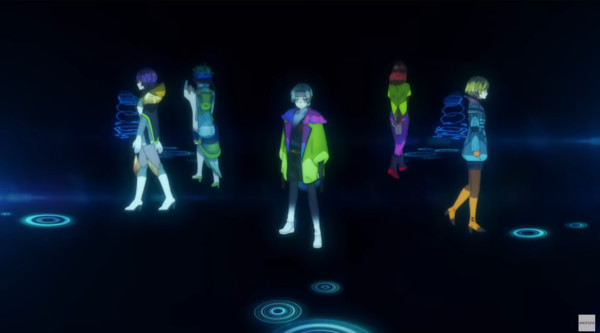
© Petit Depotto/Project D.Q.O.
Gnosia is a fascinating little game. It’s an adventure game with the primary gameplay loop centered around figuring out which crew member is possessed by a malicious being called Gnosia, utilizing Mafia/Werewolf/Among Us mechanics. The four-person development team intentionally aimed to cultivate a small audience by creating the game for the PS Vita at the very end of the system’s life cycle, but ended up porting it to Switch after being offered a spot during a Nintendo Direct. From there, they developed a cult audience.
I love it. I love the unique character designs rendered in soft, watercolor-style art and the satisfying feeling of being drip-fed nonlinear bits and pieces of information as I muddle my way through repeated games of Mafia against a recurring cast of weirdos. I’m just not sure if the things I love about it will transfer well to a linear narrative like anime…
But I’m choosing to be an optimist here, because there’s a lot to love about Gnosia that can very easily make the jump from one medium to the other. The trailers and news articles show signs of a production team putting a great deal of care into the adaptation: even if they can’t use the soft lines and colors of the game, the elaborate designs of the characters I know and love have been rendered faithfully. In case you’re not familiar with the source, that includes a sentient beluga on a scooter, a teenage girl covered head to toe in elaborate tattoos, and a Close Encounters-style alien-looking guy, among other eccentrics. The protagonist is never gendered or depicted onscreen, but their anime-original character design looks to be intentionally androgynous – fitting for a game with multiple explicitly nonbinary characters.
And the voice cast! I legitimately gasped when they released the list of actors. Tomokazu Seki, Kenjirō Tsuda, Aoi Yūki, and Saori Hayami are just a few of the big names involved. They’re cast so perfectly that I had to remind myself that the game isn’t voiced and I’m just imagining TsudaKen as a space cowboy with a robot arm. It’s simply the role he was born to play. The characters aren’t incredibly deep, but nor are they established archetypes, so getting actors who have proven to have range is just as important as distinctive voices and long resumes.
The trailers for Gnosia look amazing, and in this post Among Us world, it has a chance of garnering a pretty solid audience. Even if it’s not the greatest adaptation, anything that gets people to try out a strange little indie game about identity that includes strong nonbinary representation is a win in my book.
—Caitlin Moore

©冬夏アキハル・白泉社/「転生悪女の黒歴史」製作委員会
Isekai and villainess series are typically not my bag, so when I was assigned to watch the preview of The Dark History of the Reincarnated Villainess‘s first episode at Otakon, I just assumed that it was going to come and go like wind through a goose. But then certain things came into light. Directed by the guy who made The Demon Girl Next Door? Hell yeah! A comedy of errors with well-executed set-ups and payoffs? Hell yeah! Bright colors and animation? Well, well…color me interested.
Hiroaki Sakurai is totally in his zone here in how he balances out cute comedy that cancels out whatever grim nature one would infer from the anime’s title. I said in my Otakon report that nothing here made me bust a gut, and I still stand by that. But they don’t have to. The jokes still follow their given formulas without coming off as formulaic, and there’s a charm to it all that stuck out—I’ve read the first chapter of the manga, and the bits of comedy that are there feel way more pronounced here in the anime. Being transported into your own story is something that has been done before. Still, the twist of being turned into the wrong character, and then having to re-write the narrative, all while simultaneously having to recall how things play out, is something you don’t see every day. There are so many great bits that can be culled from Reincarnated Villainess’ comedy of errors, and that alone is worthy of my intrigue.
I’ll admit that Otakon might have left me so busy that I couldn’t properly soak up all of Reincarnated Villainess’ first chapter. I wrote (and I quote) “I liked what I saw” in a tone so dry and matter-of-factly, almost like I didn’t quite appreciate what was on screen. But I’ve given some time to think about it, and after seeing it with an audience who totally leaned into all of its gags, I’m very excited for its first episode to air so I can see what I missed.
—Jeremy Tauber

©Paru Itagaki (AKITASHOTEN) /SANDA Project
Paru Itagaki is the kind of freak that I can’t help but respect. Yes, a part of me is still mad at her for the way that the BEASTARS manga ended with such an inconclusive wet fart of an ending, but you know what? The journey getting to that disappointing wet fart was still pretty damned fun, like noshing on a massive plate of delicious smoked ribs and perfectly baked BBQ beans despite knowing full well what it will end up doing to you and your loved ones in the long run. All of this is to say that I don’t necessarily want to let myself expect that SANDA will be a great anime, but it’s a deranged sci-fi action epic starring a beefcake Santa Claus by the creator of BEASTARS. Am I supposed to let something as petty as a few lame chapters of an otherwise excellent first manga deter me from something so obviously and undeniably badass?
If you are, for some reason, attempting to come up with a genuine retort to that clearly rhetorical question, let me stop you right there, because Science SARU is animating SANDA, and their impeccable work adapting DAN DA DAN has solidly earned them at least two-and-a-half lifetimes of goodwill to burn through. Those mad geniuses could spend the next several years animating old Dilbert strips and random pages from Chick Tracts that some poor Japanese intern had to scrounge out from the garbage pails of abandoned West Coast bus stops, and I’d still give anything that Science SARU produced a chance. When you tell me that the artists who produced the Acrobatic Silky episode of DAN DA DAN are going to give me at least twelve episodes of Sexy Muscles Santa beating the spirit of Christmas into any of the sons of bitches that are dumb enough to get between Kris Kringle and kids with empty stockings hanging above their mantles, then I am in. It’s as simple as that.
—James Beckett
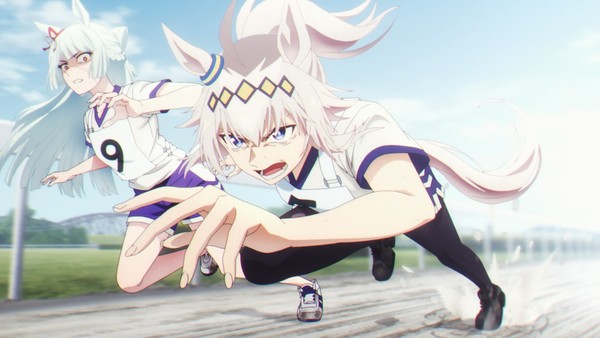
©K, S, I/S, UCP © Cygames, Inc
Ever since the English version of the Uma Musume: Pretty Derby smartphone game came out earlier this year, horse girl fever has returned to anime fandom with a vengeance. If you’re curious about dipping your hoof into this franchise, I’ll tell you this: Opposite of what I was led to believe, Uma Musume has more in common with the monster girl genre than the idol genre.
Sometimes the horse girls act like girls, and sometimes they act like horses—stomping and high-stepping and occasionally being led to their race gates by human handlers. They nail horseshoes to the bottom of their running shoes, run in special road lanes that have higher speed limits than the cars that drive alongside, and wear hairstyles that carefully conceal the
smooth spots where human ears ought to be. It’s a little bit body horror that way! I am no exception to this franchise‘s sudden resurgence in popularity. Over the past few months, I rewatched all three seasons of Pretty Derby before starting in on Cinderella Gray. Watching all four anime in such quick succession demonstrated that there is simply no comparison between the direction and animation of Pretty Derby (P.A. Works‘ first season, Studio KAI‘s second and third) and Cinderella Gray (Cygames‘ in-house animation studio). Though all four shows exhibit the quirky personalities and silly worldbuilding that characterize this bizarre alternate universe where horse girls have replaced beasts of burden, only Cinderella Gray has the animation chops to make each race feel uniquely impactful: an edge-of-your-seat action sequence that renders the power, speed, and style of each unique racer in great detail, conveying the expectation that anything could happen.
In Pretty Derby, Oguri Cap is a punchline. In Cinderella Gray, she’s an action star. She stands out not only because of her unique running style, animated as a deep forward lunge, but also because of her decidedly understated personality, so different in intensity from the three heroines of Pretty Derby: the optimistic Special Week, the competitive Tokai Teio, and the cheerful Kitasan Black. The huge quantities of food Oguri shovels down her gullet each meal are minimized to an idiosyncrasy (as opposed to the entire point of each of her Pretty Derby appearances). Taking center stage is Oguri’s reserved determination and the sheer, silent joy she takes in running. Her plotlines in Cinderella Gray, such as her humble beginnings in the boonies, the time she misses the cutoff for the Japan Derby, and her heated rivalry with fellow ashen-haired horse girl Tamamo Cross, are all taken from the real-life events of the racehorse that is her namesake. The first cour concludes with a major event for Oguri Cap—her first loss in a serious winning streak. How will Oguri, who has quietly and confidently overtaken every challenger up until now, confront the realization that she isn’t infallible? It’s a classic stepping stone that prior sports anime have tackled in the past, given new interest here thanks to Oguri’s distinct lack of a protagonist’s typical hot-blooded competitiveness, paired with Cygames‘ excellent in-house animation.
—Lauren Orsini

©TATSUKI FUJIMOTO/SHUEISHA・Tatsuki Fujimoto 17-26 Committee
Almost a year ago, I found myself reeling as I watched the credits roll on Look Back—a heartbreakingly moving short film based on Tatsuki Fujimoto’s manga novella of the same name. After sitting with my feelings for a little while, I opened up Bluesky and shot out a post that read: “Seriously, I’d love an anthology film based on his earlier one-shots.” Why exactly did I bring up Fujimoto one-shots? While I do enjoy his bloody magnum opus, I find the author to be even more of a “creative baseball bat” in his smaller works. He hits readers over the head with exactly what he wants to say, leaving them to ponder the stars they’ll be seeing for a while.
That is exactly why Look Back shook me to the core—both on the page and on-screen. Someone must’ve felt the same when Tatsuki Fujimoto 17-26 was given the green light to enter production. The one-shots featured in both Tatsuki Fujimoto Before Chainsaw Man collections serve as a fascinating window into the author’s career as he slowly figured out his style and the sort of stories he wanted to tell. But most fascinatingly, the blueprints for his greatest works can be found within the pages of these collections—all the way from Fire Punch to Goodbye, Eri.
With these eight stories making the jump to animation, I’m intrigued to see how each animation studio involved goes about making them in their own style. It’s not uncommon for a work to change or evolve in adaptation, as certain talents might be able to pull further on the threads of stories such as Sisters, Woke-Up-as-a-Girl-Syndrome, and Mermaid Rhapsody. Perhaps there may be a segment that’s not as impactful as the others, but that’s the beauty of an anthology. Titles like Robot Carnival and The Animatrix allowed their disparate creatives to go hog wild while exploring a singular world. In this case, the world being traversed is Tatsuki Fujimoto’s early work.
Of the tales in this anthology, I’m the most excited to see how Nayuta of the Prophecy sticks the adaptation landing. Chainsaw Man readers are probably familiar with the name and some of the beats they’ll encounter, but this Nayuta deftly balances the wholesome with horrific as it follows a brother and his demonic little sister. She’s a kid who says some of the darndest things, like “total death nightmare apocalypse,” but perhaps that’s not exactly what she means. Also, I’m stoked to see how a certain scene involving giant swords looks in animation. Nayuta aside, I know I’ll be taking the weekend of November 7th to kick back, relax, and see just how this new creative energy has been breathed into Tatsuki Fujimoto’s life before Chainsaw Man.
4. Ranma ½ Season 2

©高橋留美子・小学館/「らんま1/2」製作委員会
Like plenty of other anime fans over the age of 30, I have more than my fair share of nostalgia for the iconic Rumiko Takahashi hit that is Ranma ½. Is the 2024 remake perfect? Not quite; Ranma’s infamous uni-butt has never stopped being unsettling. And honestly, I’m not sure how many people will agree with me on this, but I miss a lot of the filler episodes from the original series. Not all of them were created equal, of course. Most of them are at least good, and the great ones could honestly find their way onto any worthwhile list of all-time best anime filler episodes (my personal favorite is probably “Extra, Extra! Kuno & Nabiki: Read All About It!”). I know in my heart that, alas, we have no chance of getting any of those episodes in the remake.
But to balance all this out, the remake did some things way better than the original anime did: of particular note, the racism has been turned way down, and the visuals are so much more colorful and stylish now. Also, I love that it’s not doing that incredibly annoying, arguably story-ruining thing that a lot of newer anime for older series—especially remakes and revivals—sometimes do and bringing its setting into the modern age as though the timing of the original story is totally arbitrary, or as though giving everyone a smartphone for no discernible reason doesn’t carry massive implications. So all this to say: so far so good, whether you’re a new or returning fan.
This second season will (finally!) bring in both Mousse and Ukyo—both of whom are A+ characters in a series that, to this day, I still think has the strongest overall cast of characters Takahashi has ever created. A lot of the promo material is (understandably) emphasizing the Romeo and Juliet episode, but to me, Mousse and Ukyo are absolutely the main attractions here. Ukyo, in particular, was always my favorite of the girls back in The Day, and I wonder if I’m still going to feel that way after encountering her in this more manga-faithful adaptation as an adult.
—Kennedy
3. Spy×Family Season 3
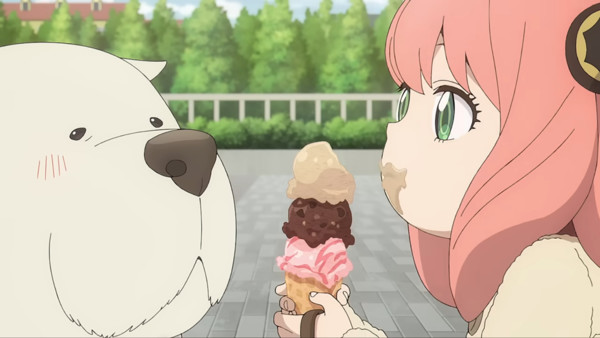
©遠藤達哉/集英社・SPY×FAMILY製作委員会
What is there not to love about Spy×Family? It’s such a great anime and manga that appeals to a wide demographic. Perhaps one of the reasons I love it so much is that it’s something I can watch with my wife, and she enjoys it as much as I do. There’s something almost nostalgic about the setup: a husband who’s secretly a spy, a wife who’s secretly an assassin, a pet dog who can secretly predict the future, and a little girl who can secretly read all of their minds. It’s a wonderful mix of loopy spy drama and screwball comedy that’s never less than entertaining.
The 1960s East Germany setting (well, “Ostalis” if you must be pernickety) is incredibly well-observed, with retro cars, clothing, and technology like something out of Mission Impossible, or The Man From U.N.C.L.E.>, both shows I spent many hours watching weekday evening reruns of as a child. The cold war vibes incorporate a pervasive air of paranoia beneath the light-hearted hijinks; after all, “fake” married couple Loid “Twilight” Forger and Yor “Thorn Princess” Forger work for opposing sides.
While it could have been easy to make the characters simple archetypes, there’s a psychological depth to each that makes their complex relationships fun and rewarding. Loid may think he’s a super-efficient, calculating spy, but his tragic childhood (which is undoubtedly to be covered in the upcoming season) and dislike of seeing children suffer mean he’s a bit of a softie at heart. Yor may present as a cold, calculating killer to her professional colleagues, but she’s a loving sister to her… problematic brother Yuri, a devoted wife to Loid (whom it’s clear she’s fallen in love with, and the attraction may be mutual), and a motivated and protective mother to Anya.
Anya herself is an ultra-cute agent of chaos who, although she knows far more about what’s going on than she lets on, is only a tiny child, and frequently makes hilariously incorrect assumptions about her parents’ missions and goals. Plus, she makes the most adorably exaggerated facial expressions. Family dog Bond is the goodest of good boys.
Borf.
I’ve heard some critics complain that the plot doesn’t really go anywhere, but to count that as a negative misses the entire point of Spy×Family. It’s a character-based situation comedy with a historical espionage setting. It absolutely doesn’t matter that Loid won’t fulfil his main mission any time soon, nor is it a problem that no one’s secrets have yet been revealed. The enjoyment comes from the situation and the comedy that ensues. Recent manga chapters have started to inch the plot along a little, but only in between daft chapters of less-dramatic, humorous shenanigans.
With the dual production team of CloverWorks and Wit Studio continuing to work their magic on this flawless adaptation of a fantastic manga, I’m delighted that the show continues under their proven regime of excellence.
—Kevin Cormack

©Akiyoshi Hongo,Toei Animation
Digimon is one of several childhood franchises that have managed to stick with me for longer than they probably should have, and a big part of why that is largely boils down to Digimon‘s willingness to constantly reinvent itself. Whereas series like Pokémon or Yu-Gi-Oh! have maintained a fairly consistent brand identity over the years with their various anime adaptations, Digimon has proven that it can be about basically anything so long it involves a group of kids befriending monsters from a digital plane of reality. Sometimes it results in one of the best isekai ever made, like the original Digimon Adventure, and other times you get weekly child-unfriendly horror shows like Digimon Ghost Game that constantly skirt the line of what’s acceptable for a kids’ timeslot. You truly never know what you’re gonna get, and while that hasn’t always worked in its favor (the Digimon Adventure: reboot is certainly proof of that), it’s kept the franchise interesting enough that I’m always willing to check out any new anime it has on offer.
In the case of Beatbreak, the flavor here seems to be cyberpunk, which, despite some of the franchise‘s sci-fi elements, is a setting that it somehow hasn’t tackled in anime form before now. While previous Digimon entries haven’t totally shied away from any discussions about the ways digital technology has reshaped our modern society, the main sticking point is with Digimon Tamers, which is generally regarded as the best entry in the franchise. Exactly whether or not this will be able to match the heights of that show is anyone’s guess, but it does seem to be in good hands. For one thing, it’s being directed by Hiroaki Miyamoto whose biggest claims are One Piece: Film Gold and Twinkle Star Precure, and although the latter doesn’t seem like it would be relevant to a show with a Hot Topic cyberpunk aesthetic, Precure and Digimon share a lot more DNA than you’d think, particularly when it comes when it comes to giving their kid protagonists good personal struggles. The best Digimon shows have usually been the ones that excel in that area, and since Twinkle Star Precure‘s reputation has been sold to me as one that wasn’t afraid to tackle heavy subjects like racial discrimination in Japan, this seems like it could be ripe for both good character drama and a few degrees of social commentary.
Perhaps more relevant to long-time Digimon fans though, is that this show is being Digimon penned by Digimon Savers (or Data Squad for fellow Americans) writer Ryota Yamaguchi, with that one having been one of the better regarded Digimon shows for its day. While Savers isn’t among my personal favorites in the franchise, it was a solid attempt at a Digimon series that was aiming to present itself as a bit more mature and modern, and since this one seems to be aiming for a similar approach, he seems like the right pick for the job. Although Digimon has gone through a bit of a resurgence over the past few years, it hasn’t quite been enough to return it to something close to mainstream relevance outside Japan, and has mostly remained in its own niche. This seems like it could be the shot in the arm the franchise needs to gain a new audience, and while time will tell if it manages to pull that off, it looks to have enough going for it that I’m optimistic about its chances.
—Jairus Taylor
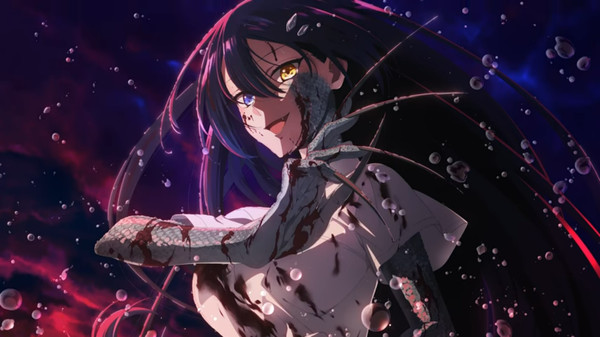
©2024 Sai Naekawa/KADOKAWA/Project Watatabe
Yuri anime comes in waves, sometimes sweeping in to the shore like a flood tide, other times ebbing with the moon. Although This Monster Wants to Eat Me‘s creator doesn’t necessarily think of the series as GL, it should still touch a lot of those notes if it hews close to its source manga, a distaff version of The Summer Hikaru Died in the queer horror space. Like Yoshiki, Hinako finds herself faced with the supernatural following a tragic event, but in her case, the tragedy happened years ago, and the monster in question is a mermaid with a taste for human flesh.
Hinako was the lone survivor of a car accident that claimed the lives of her parents and older brother and left her covered in scars – and with plenty of emotional ones, too. Even though these are supposedly invisible, they’re obvious nonetheless. She walks around with her head down, her eyes largely vacant, and covers her limbs and neck to hide the physical scars. Her only close friend is Miko until Shiori arrives – and Shiori isn’t exactly human. She’s a carnivorous mermaid, hiding her scales and donning legs, and her express desire is to consume Hinako’s flesh…something that Hinako thinks might be a relief.
The horror elements in the story are carefully mingled with Hinako’s emotional state. Shiori, for all that she wants to eat Hinako (possibly in two senses of the word), also wants her to live, creating a paradox that furthers the girls’ relationship. Miko is hiding secrets of her own, and these, too, are focused on Hinako’s emotions and suicide ideation. Hinako sees herself as a dead girl walking, someone who should not have survived, and how Shiori and Miko fit into that, and how they try to encourage her to continue breathing, forces us to question what, exactly, it means to have “humanity.”
The three main voice actors – Ai Fairouz, Yui Ishikawa, and Reina Ueda – are all very capable, and I’m particularly interested to hear Ishikawa’s take on Shiori after her turn as Lihua in The Apothecary Diaries. Trailers make it look like this will have the color scheme and animation chops to properly adapt Sai Naekawa‘s sweeping, moody artwork, and even if it’s only half as good as the books, it should be memorable. Rumiko Takahashi‘s Mermaid’s Scar series taught us why we shouldn’t eat the flesh of mermaids. What will This Monster Wants to Eat Me teach us about when the situation is reversed?
—Rebecca Silverman
The views and opinions expressed in this article are solely those of the author(s) and do not necessarily represent the views of Anime News Network, its employees, owners, or sponsors.
Disclosure: Kadokawa World Entertainment (KWE), a wholly owned subsidiary of Kadokawa Corporation, is the majority owner of Anime News Network, LLC. One or more of the companies mentioned in this article are part of the Kadokawa Group of Companies.
